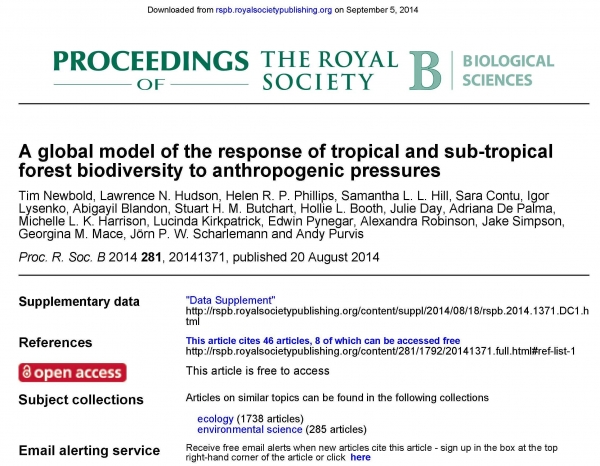Study Predicting the Impact of Land-Use Change on Biodiversity Published

Scientists at the UN Environment Programme World Conservation Monitoring Centre (UNEP-WCMC) and the Natural History Museum, London, UK, have published a worldwide synthetic analysis of how individual species in four taxonomic groups, namely invertebrates, reptiles and amphibians, mammals and birds, respond to multiple human pressures in tropical and sub-tropical forests.
To predict the impacts of land-use change on biodiversity, scientists used the Projecting Responses of Ecological Diversity in Changing Terrestrial Systems (PREDICTS) model – a collaborative project combining data from numerous studies to identify how human pressures impact on species and their habitats. In this study, scientists predicted biodiversity change under different scenarios of land-use change for nearly 4,000 tropical and sub-tropical forest-dwelling taxa.
Scientists found significant independent impacts of land use, human vegetation offtake, forest cover and human population density on occurrence as well as abundance of species, concluding that responses differ among the four taxonomic groups considered, and, for birds and mammals, between habitat specialists and habitat generalists, and between narrow-ranged and wide-ranged species.
The main findings include: forest-specialist species and narrow-ranged species are among the most severely impacted when land is converted from natural to human-dominated habitats; birds are particularly sensitive to urban land use, declining significantly as human population density increases; and transformation of habitats for human land use is causing overall reductions in species richness and abundance.

Facebook comments